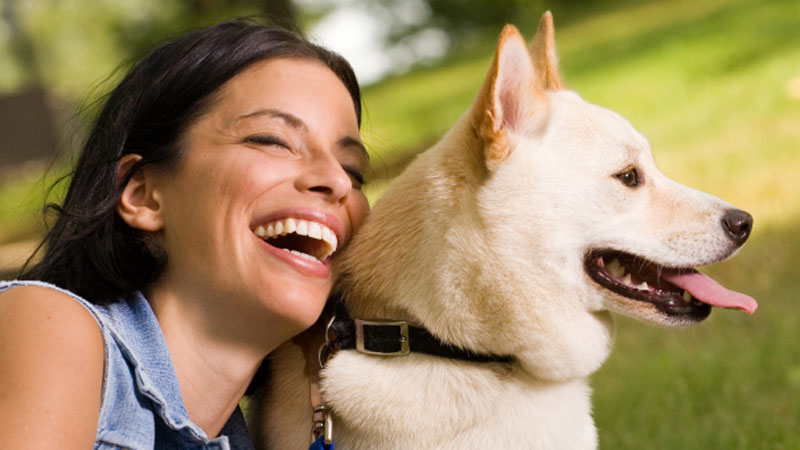Dog Eye Problems
Eye problems are very common in dogs; from straightforward conjunctivitis to sight-threatening glaucoma.
Conjunctivitis can be infectious or allergic. The symptoms shown are similar for each - the eyes are visibly inflamed and red. There is often a clear or green mucus discharge and usually, both eyes will be affected. On examination, the conjunctiva will be red and angry, but the eyeball is normal. Eyes are usually fully open as, although an irritating condition, it is not normally painful. Allergic conjunctivitis is treated with a steroid eye drop and is more common in the summer. Infectious conjunctivitis is treated with an antibiotic drop and is highly contagious.
Corneal Ulcers are erosions on the surface of the eye. They are usually caused by trauma such as bumping into something, a scratch from a thorn or cat or ingrowing eyelashes. Dogs with bulbous shaped eyes (pugs, boxers) are more susceptible because more of the surface of the eye is exposed. Ulcers are painful so the dog may be squinting or have the eye closed. Usually, only 1 eye is affected at a time. The eye is red and sometimes the cornea can have a cloudy appearance. If the vet suspects an ulcer, it can be diagnosed by putting a special orange dye into the eye which stains the ulcer green so it can be seen more easily. Most ulcers will heal within 1-2 weeks and are treated with drops to keep the eye lubricated and antibiotic drops to prevent secondary bacterial infection. Some ulcers can take longer to heal and may even need surgery.
Dry Eye occurs when there is a lack of tear production to lubricate the surface of the eye. It usually affects both eyes and they often appear red with excessive sticky mucus discharge. It can lead to corneal ulcers because the surface of the eye dries out. It is more common in Cocker Spaniels and many of the terrier breeds. Your vet can diagnose the condition by measuring the tear production from each eye over a minute. This condition is not curable but is treatable with a special ointment called Cyclosporin which stops the destruction of the tear-producing gland in the 3rd eyelid. It is also treated with artificial tears which make the dog more comfortable.
Glaucoma occurs when the pressure within the eyeball increases usually due to blockage in the drainage of the fluid within the eye. It is a very painful condition and the eye can be red, cloudy and even visibly swollen. It can quickly lead to blindness due to the increased pressure damaging the delicate structures of the eye. Treatment needs to be rapid and often referral to a specialist Ophthalmologist is required. Some cases can be managed medically but some require surgery. It usually affects one eye initially but depending on the cause many dogs develop it in both eyes.
Cherry Eye is mainly seen in brachycephalic breeds and occurs when the 3rd eyelid prolapses and appears as a red inflamed lump above the lower eyelid. The 3rd eyelid shouldn't be exposed so it quickly dries out and becomes damaged. This condition is treated surgically.
Entropion is an inward rolling of the upper and or lower eyelids. It can affect one or both eyes. The hair scratching the surface of the cornea causes considerable irritation and can results in corneal ulcers. Shar Pei are particularly prone to this due to their excessive skin folds and many require surgery at a young age to correct the defect.
Ectropion is an outward rolling of the eyelid and if often seen in older dogs as the facial skin stretches. St Bernard`s often suffer from this problem but it is well tolerated and doesn’t usually need treatment.
Any traumatic injury to the eye whether a blunt trauma, foreign body or scratch always needs immediate attention. It may be nothing serious but any foreign material or infection can lead to uveitis, ulcers or glaucoma


